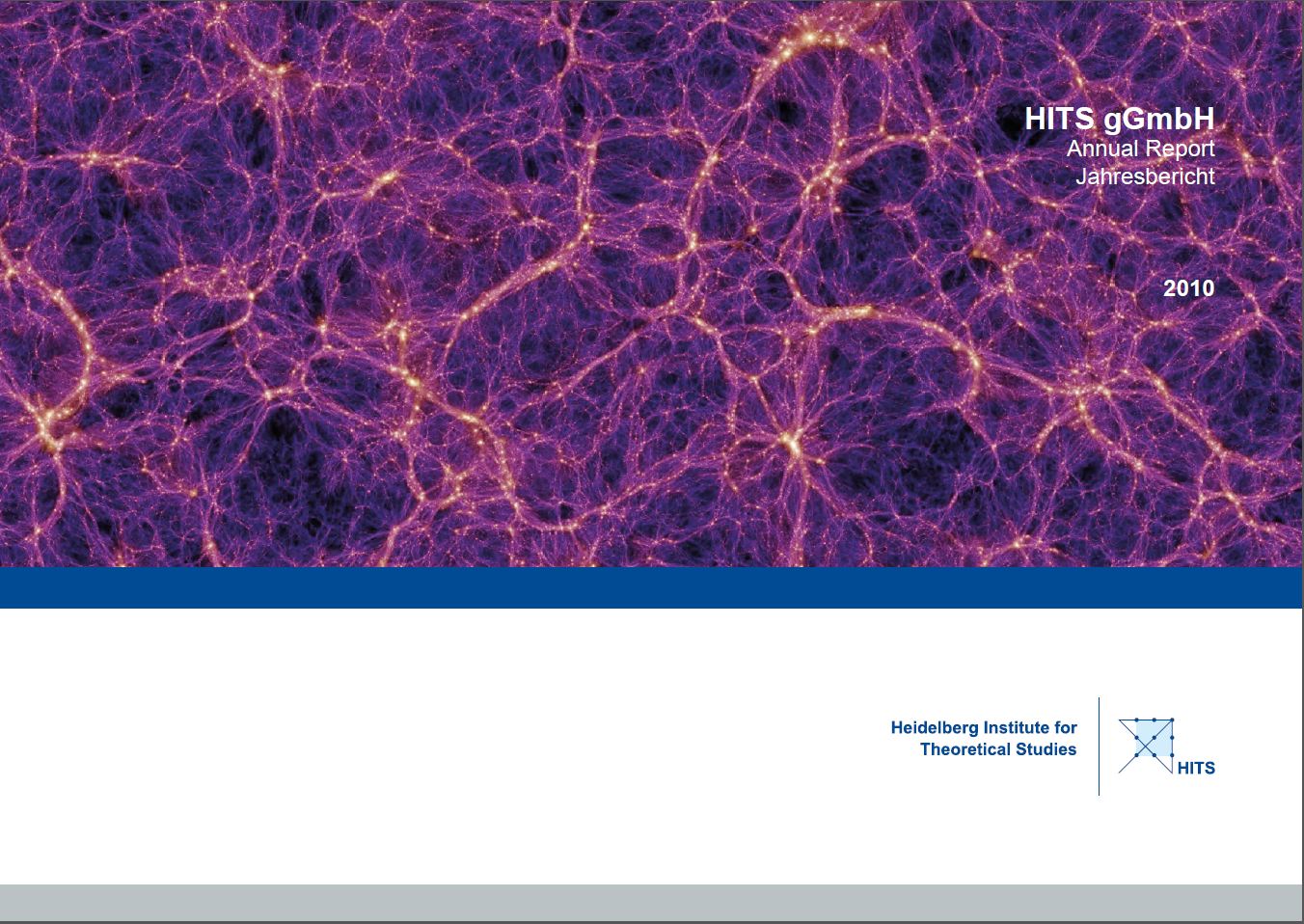One Year of HITS – HITS In the Year 2010

The first Annual Report of the Heidelberg Institute for Theoretical Studies (HITS) is now available. It covers computer-aided research, reaching from the discovery of a new molecular mechanism in blood coagulation to the largest ever cosmological simulation.
The Heidelberg Institute for Theoretical Studies took up its work at the beginning of 2010. The Annual Report now available in German and English provides insights into the activities of the non-profit research institute established by the Klaus Tschira Foundation. 80 members of staff conduct basic research in order to interpret the drastically growing volume of experimental data in different branches of natural sciences, mathematics and computer science. “Numerous conferences and some 90 publications show the high level of activity of our researchers,” says Managing Director Prof. Andreas Reuter who jointly manages the Institute together with Dr. h.c. Dr. E.h. Klaus Tschira, the founder of HITS.
At the moment, six research groups are working at HITS. Their common denominator is the processing and structuring of large data volumes and producing computer simulations. For example, Dr. Rebecca Wade from the Molecular and Cellular Modeling group (MCM) and her research partners from Italy and Belgium identified novel antiparasitic compounds which facilitate a more efficient treatment of leishmaniasis, an infectious disease particularly affecting millions of people in developing countries. The Molecular Biomechanics (MBM) group headed by Dr. Frauke Gräter has discovered a new molecular mechanism in blood coagulation; they could also show why spider web is so tear proof and elastic at the same time. Computational linguist Prof. Michael Strube and his Natural Language Processing (NLP) group have developed a new method for extracting a semantic network from Wikipedia.
The Scientific Databases and Visualization (SDBV) group ensures that other groups have better networking and orientation opportunities in large system biology projects. In 2010, the major German initiative ‘Virtual Liver Network’ came into being. Within this project, researchers from HITS headed by Dr. Wolfgang Müller supervise the data management of 70 research groups in total. The Scientific Computing (SCO) group calculated the largest ever Phylogenetic Tree comprising about 120,000 species. In the course of this project, HITS researchers led by Dr. Alexandros Stamatakis and botanists from the U.S. have gained new insights into evolutionary mechanisms.
The Theoretical Astrophysics (TAP) group led by Prof. Volker Springel has set a new record: In an international cooperation project, they have run the largest ever cosmological simulation – the ‘Millennium XXL’ simulation comprising more than 300 billion of particles.
Press contact:
Dr. Peter Saueressig
Head of Communications
Heidelberg Institute for Theoretical Studies (HITS)
Phone: +49-6221-533245
Peter.saueressig@h-its.org
www.h-its.org
Twitter: @HITStudies
About HITS
HITS, the Heidelberg Institute for Theoretical Studies, was established in 2010 by physicist and SAP co-founder Klaus Tschira (1940-2015) and the Klaus Tschira Foundation as a private, non-profit research institute. HITS conducts basic research in the natural, mathematical, and computer sciences. Major research directions include complex simulations across scales, making sense of data, and enabling science via computational research. Application areas range from molecular biology to astrophysics. An essential characteristic of the Institute is interdisciplinarity, implemented in numerous cross-group and cross-disciplinary projects. The base funding of HITS is provided by the Klaus Tschira Foundation.